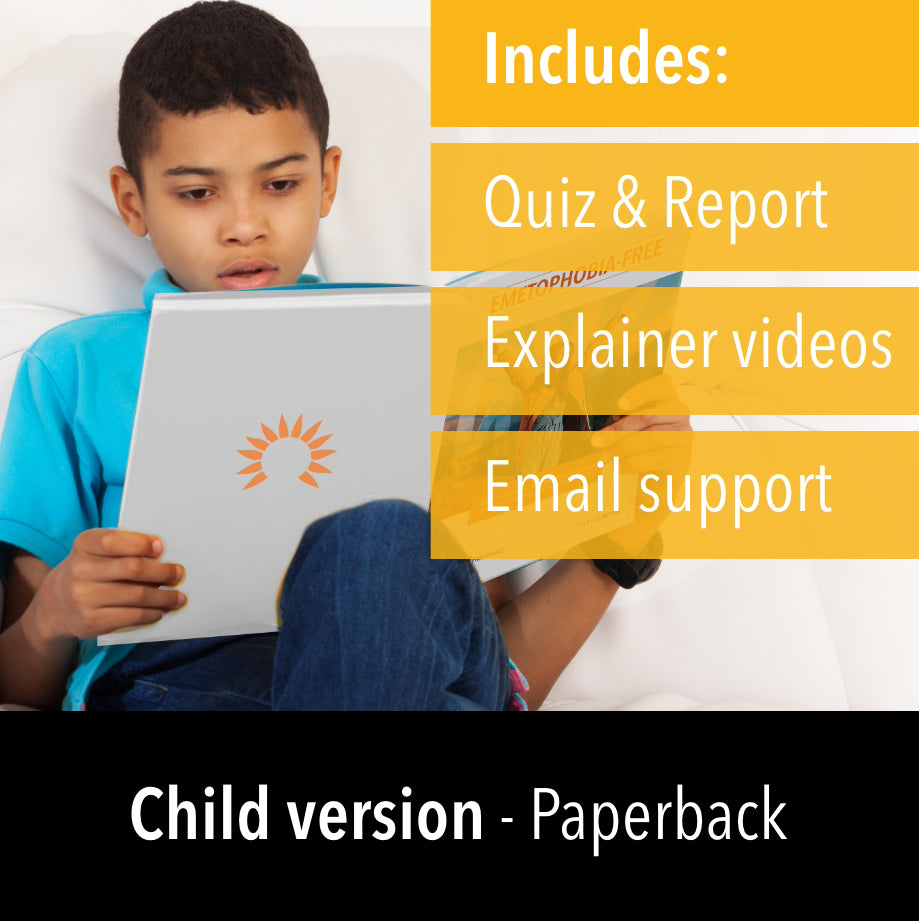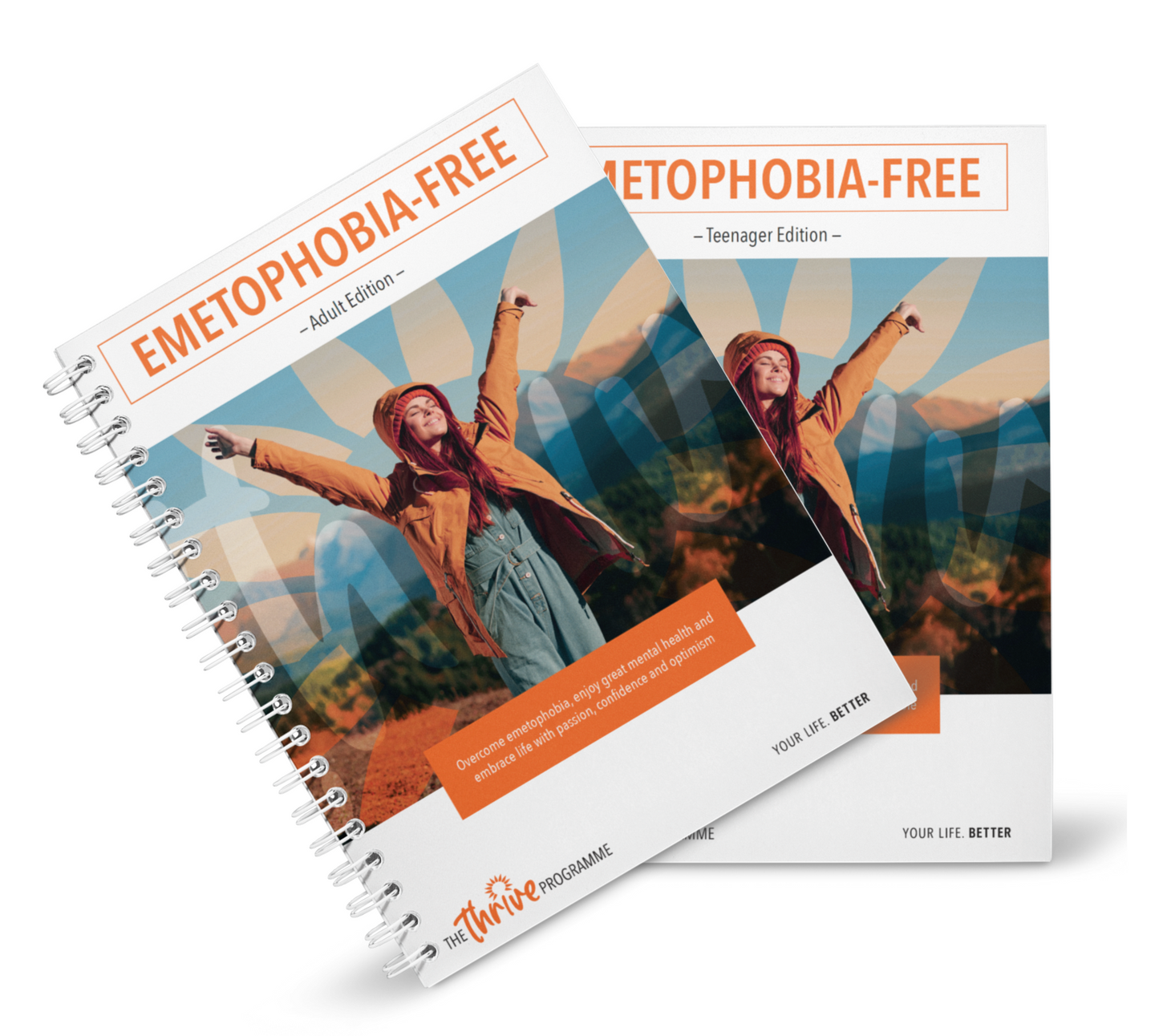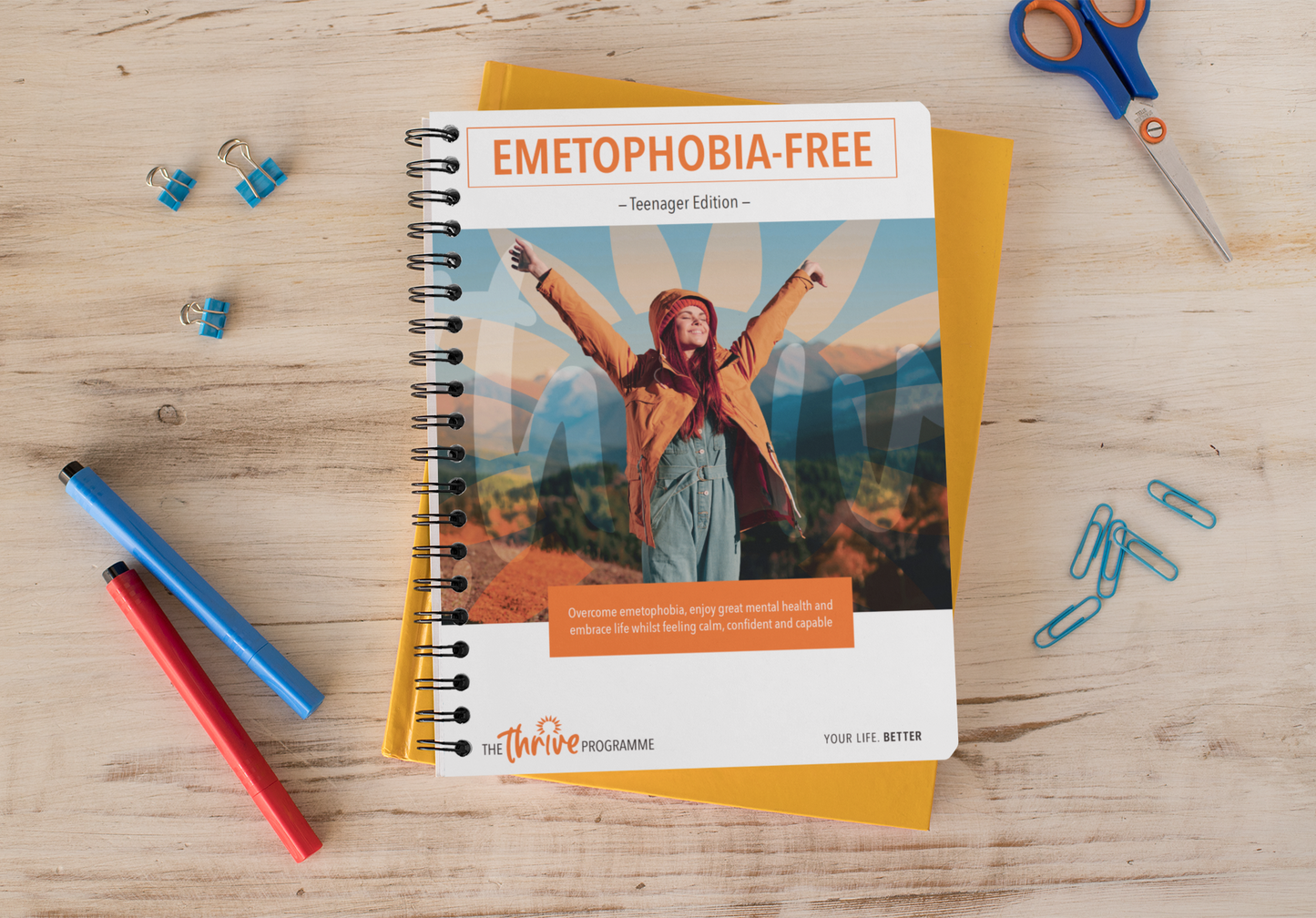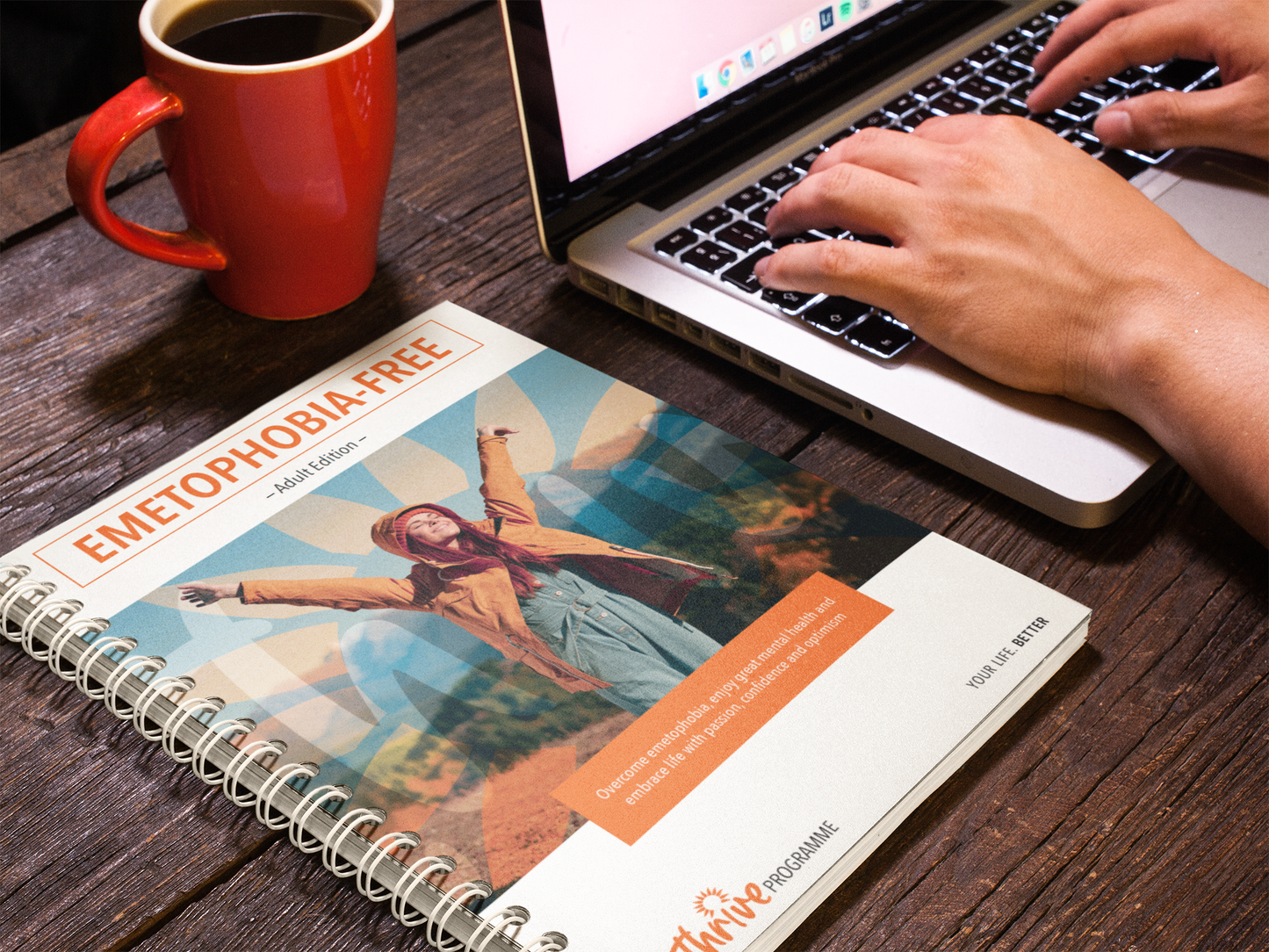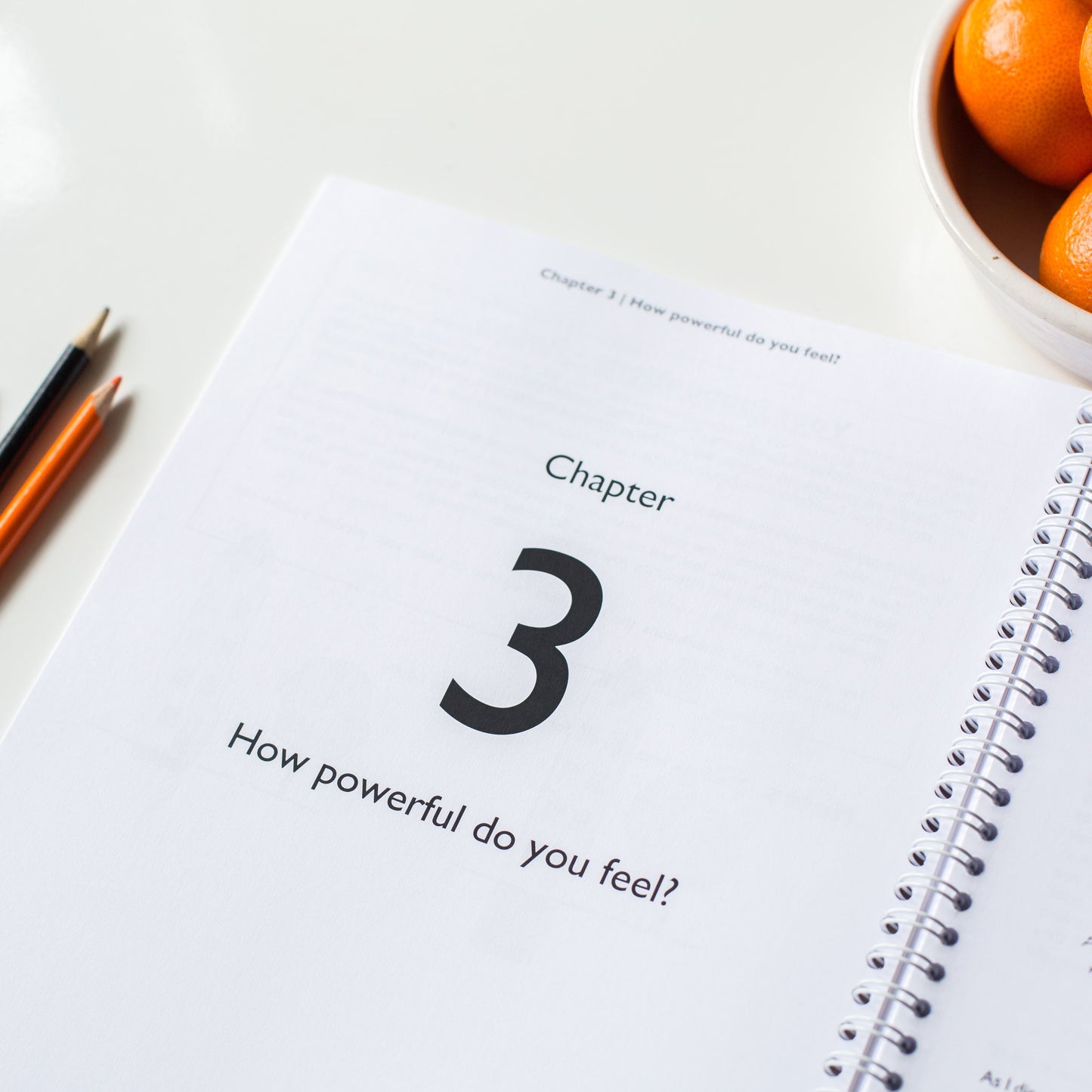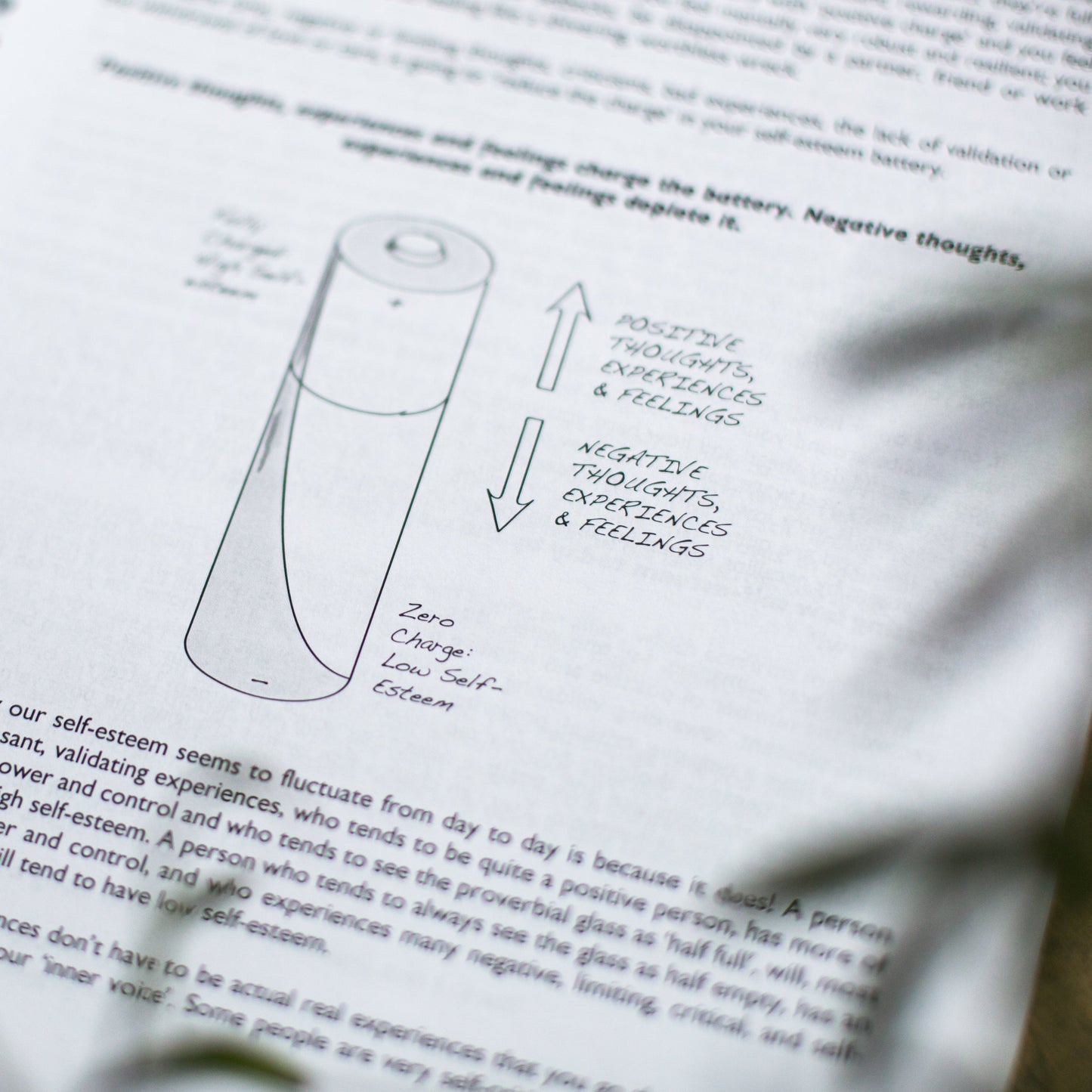The Emetophobia Programme for Children (with Paper Manuals)
The Emetophobia Programme for Children (with Paper Manuals)
Couldn't load pickup availability
Important: This programme is designed for both the child AND their parent/carer to complete together. The child will work through their manual alongside the adult who will work through their own adult manual (both manuals are included in the child programme). It is imperative that the adult read, learn and understand all the concepts within the programme to assist their child throughout.
The only proven cure for emetophobia, helping over 20,000 people beat their fear since 2014. Based on 30 years' clinical experience and research, this is the simplest, most stress-free method to conquer your fears and start thriving in life.
What does the Programme include?
- The Emetophobia-Free Programme Manual for Children in paperback form
- The Emetophobia-Free Programme Manual for Adults in paperback form (both delivered worldwide by post)
- Online 20-page TQ Assessment to track your progress
- Weekly emails to help motivate your journey, full of top tips
- 14 Support videos to assist your progress
Support Videos included with this version:
*The support videos are for both the child and the parent to watch and learn together.
- About The Emetophobia-Free Programme – This introductory video explains how the process works, how to use the videos to best effect, and how the programme itself started, with some real-life examples of our most inspiring former clients. It outlines how other mental health treatments are structured, their similarities and their shortcomings, and explains how the programme fits (or perhaps doesn’t!) into the current mental health treatment landscape.
- Beliefs & Cognitions – This video examines our beliefs and the way we see things in more details. It looks at the huge impact our own individual filters and ‘lenses’ are in shaping how we view our reality, shows how exactly we create these lenses, and discusses related concepts like ‘cognitive bias’ and ‘inattention bias’. It explains how these different filters affect the way we view, process and react to different experiences and events. The video also examines the connection between thoughts and beliefs, particularly in relation to phobias and fears.
- Understanding your Emetophobia TQ Report – This video explains all of the results from your TQ Report. Understanding what all of the graphs mean will allow you to fully appreciate where you are and therefore, where you are heading. In working hard to improve all of the section results from your TQ report, you will see that your progress is measurable and, vitally, predictable.
- Introduction to SPACE - This video introduces us to the concept of SPACE, our Sense of Power And Control over Events. It looks at how exactly we learn behaviours and thinking styles, dispelling the myth that we are born and/or stuck with certain unhelpful thinking patterns. It looks in more detail at thoughts and beliefs, and outlines experiments demonstrating how quickly just a few words can subconsciously affect our behaviours and attitudes. This video also explores the concept of ‘psychological foundations’.
- More about SPACE - This video looks in more detail at psychological foundations and the way that we process events. It explores their relationships to SPACE, to our Desire for Control and to our coping skills. It looks at different kinds of external influences, from religion and spirituality to fate, luck, horoscopes, the supernatural/paranormal, as well as social pressures and conformity. It explores how these can affect not just our SPACE, but our emotions, reactions, attitudes, and behaviours, and fuel powerlessness in areas such as obesity, addiction and smoking, health problems, emotional responses, work and relationships.
- Depth of Belief - This video focuses on how exactly we challenge our SPACE, think more internally, and change our unhelpful or limiting beliefs. It highlights not just the belief change itself, but the process and depth of belief changes. It looks at how to create stable belief changes that build a new perspective and SPACE, the importance of looking for new evidence, and examines the ‘belief wall’ tool in order to embed belief changes.
- Beliefs & why we react so quickly - This short video examines the common assumption that emotions just ‘happen’ to us quickly, in the moment, without any lead-up thinking. It looks again in more detail at the way we view and process events and experiences, and explains how our underlying beliefs and SPACE directly and predictably contribute to exactly what emotions and reactions we create in the moment, even if at the time they might SEEM spontaneous and out of our control.
- Self-Esteem - This video focuses on a core part of our psychological foundations: self-esteem. It outlines what builds high, stable self-esteem, the role of our inner voice, and dispels the myth that our self-esteem is based on external factors like work, relationships, income, the past, and social life. It introduces the additional concepts of internal and external self-esteem, of a 2-week self-esteem ‘battery’, and outlines our marble analogy for positive and negative thinking and self-regard.
- Social Confidence - This video explains what social confidence is, how it is not real, but we actually create it, and outlines its psychological opposite (social anxiety). It links social confidence back to self-esteem and to SPACE, shows how it also relates to our levels of secondary control, and explains the differences between anticipatory and real-time anxiety. It explains how social anxiety links to a number of specific unhelpful thinking styles, how the behaviour is often learned and copied from a significant other, and the importance of building perspective and learning to tolerate uncomfortable emotions in order to challenge socially anxious thoughts. It also introduces key concepts including ‘diffusion of responsibility’ and ‘obedience to authority’.
- Social Confidence – Overcoming fears & phobias - This video explores how we challenge social anxiety, with particular relation to overcoming phobias, fears and performance-related anxieties. It explores the importance of managing your thinking well on a daily basis, and outlines an approach to 'preparing for, managing during, and processing after' a challenging situation or event. It examines the key role of your inner voice in building confidence and reducing anticipatory anxiety, and outlines in detail the process for doing this and managing your thinking well around difficult situations.
- Unhelpful Thinking Styles - This video explores a number of unhelpful thinking styles covered in the (identically named) chapter; Negative, Brooding/Obsessive, Paranoid, Black and White, Catastrophic, Impulsive, Perfectionist, Hypervigilant, and Learned Helplessness. It explains how each thinking style presents itself and why somebody would feel they need to use each one, and links them all back to our psychological foundations and in particular to our SPACE.
- Thinking during Blips - This specific video focuses on what happens to our thinking when we go through a blip, and explains how when we aren’t managing our thinking, our emotions can become very unpredictable and erratic. It explains that emotions don’t happen ‘to us’ but are generated 'by us'. It also explains that with the right effort and right Thrive tools, understanding what has caused your blip can then enable you to get yourself out of it quickly and predictably.
- Mind Your Language - This video explains the importance of language awareness and how the language you use reflects your thoughts, emotions and beliefs. It also outlines the significance of the language that is used, from active to passive, from helpful to unhelpful.
- The ABC’s of Thriving - This video is a guide for building and maintaining a thriving attitude and perspective even after finishing the programme. It outlines a simple ‘A, B, C’ process for managing your thinking and ensuring you are doing all the key basic Thrive work on a daily basis to keep yourself in a healthy and helpful headspace. It explains how and why to focus on your A (Attitude), B (Beliefs) and C’s (Control) every day, and gives an overview of how to implement each one on a daily basis to fit in easily with everyday life.
Why The Thrive Programme for Emetophobia?
Our goal is for you to overcome your fear and start living the life you want - without feeling anxious all the time about vomiting or seeing someone else vomit. The step-by-step program tackles the causes of your phobia, meaning you'll be getting better just by reading the book and doing the exercises!
We've helped over 20,000 emetophobes overcome their fears with this method since 2014. The programme was created out of Rob Kelly's 30 years' clinical experience and research, breaking down the unique aspects and causes of the phobia and how to effectively treat it.
With support from psychologists and the lovely Charlotte, a PhD at Cambridge University, the manual was officially launched in 2014 and went on to become a bestseller. We've now grown into a team of ex-emetophobes and emetophobia experts, so we really know what we're talking about when we say there is nowhere else in the world you need to be if you want to effectively conquer this fear.
We advise getting The Thrive Programme Journal to support your learning: an 8-week journal you fill in daily, with exercises and prompts to keep you on track as you progress the programme.
Share
